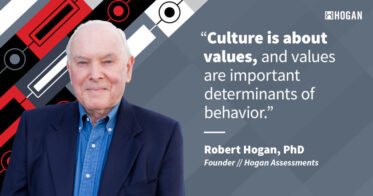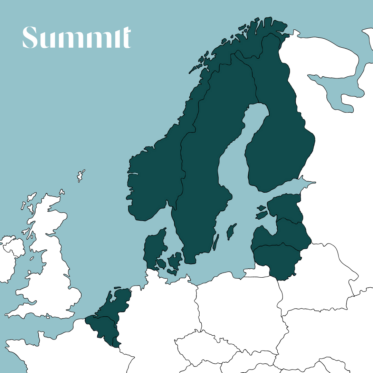Occupational well-being is an essential part of overall well-being. Effective leadership coaching will personalize developmental feedback to the leader’s needs based on the context of their role, function, and organization and on their personality. Individual differences in personality reveal how people experience well-being at work and how they manage stress. Leadership development should investigate how everyday personality characteristics, stress responses, and values can affect a leader’s well-being—and ultimately the well-being of the leader’s team and other stakeholders.
Well-being and development have always been close concepts, but organizations don’t seem to be drawing clear lines between development and well-being. Although 83% of US workers experience work-related stress,1 only 24% of employees strongly agree that their organization cares about their well-being.2 Unlike the goal of life coaching, however, leadership development’s goal is to equip leaders to build and maintain high-performing teams of people who effectively balance work and well-being.
When a leader’s occupational well-being is in balance, they can create work environments that better support their employees’ occupational well-being too. Leader behavior and relationships directly influence employee job satisfaction. Interpersonal relationships represent 39% of job satisfaction, and relationships with management represent 86% of satisfaction in work relationships.3 Employees experience more job satisfaction when their leaders prioritize, model, and actively support occupational well-being. After all, lack of support or recognition from leadership is the top driver of burnout.4
Read on to learn which Hogan scales have distinct bearing on well-being and how Hogan practitioners can incorporate well-being as a theme in leadership development conversations.
How Hogan Helps
Hogan’s personality assessments are objective tools that can help improve leader and employee well-being. While our assessments can give insight into the extent to which a person is concerned with well-being, they don’t measure well-being itself.
Hogan practitioners can use our assessments in development conversations to combat stress and burnout and improve well-being. They should first explain the purpose of development and what the assessments measure, then focus on these areas in the Hogan Personality Inventory (HPI) and the Motives, Values, Preferences Inventory (MVPI). The Hogan Development Survey (HDS) measures overused strengths that can become derailers. Practitioners should review high HDS scores for greater insight into potential performance challenges.
HPI
The HPI measures characteristics that describe how people tend to behave when they are at their best. Everyday personality strengths influence both managerial style and workplace reputation.
- The Adjustment scale concerns how someone typically handles stress and coaching. Those with lower scores tend to be more stress-prone and coachable, while those with higher scores tend to be more stress-tolerant and resistant to feedback.
- The Ambition scale refers to a person’s drive, energy, confidence, and initiative. A higher score might suggest behavior that focuses on work to the exclusion of well-being, while a lower score could imply the opposite.
- The Interpersonal Sensitivity scale relates to communication style, such as whether someone is candid and argumentative or sensitive and diplomatic. A person with lower scores could seem insensitive toward the well-being or emotions of their employees or coworkers, while someone with higher scores could seem oversensitive.
MVPI
The MVPI measures personality from the inside, describing the values that drive our occupational goals. Put another way, values show what people most care about when it comes to work.
- The Hedonism scale measures preference for formal or informal work environments. It can suggest how likely someone is to integrate work into their personal life.
- The Altruistic scale measures preference for personal responsibility and self-reliance or helping and serving others. It can suggest how motivated someone is to improve others’ lives.
Emphasizing a leader’s interconnected strengths and preferences that already pertain to well-being can provide a natural segue into occupational well-being as a developmental theme.
Advice for Leadership Development Conversations
Understanding how personality affects learning will help a Hogan practitioner to approach these three areas of the leadership development process5:
1. Enhance the learner’s receptivity to feedback and coaching.
Early in a development conversation, practitioners should draw a personalized connection between development and occupational well-being. If the leader has a high Altruistic score, the practitioner might connect that value to development by pointing out that a focus on well-being can increase employee retention. If the leader has a low Interpersonal Sensitivity score, the practitioner might explain that developing a variety of communication styles might make employees feel more connected and improve relationships.
2. Match feedback and coaching approaches to the learner’s style.
Effective leaders build and maintain high-performing teams. Leaders who learn about their own and their teams’ strengths and values also gain insight into improving the occupational well-being of both by reducing stress and increasing productivity.
Development, therefore, should help leaders become more self-aware and more perceptive of what their employees might need for well-being. Practitioners who build a development plan based on the leader’s learning style help provide optimal conditions for gaining strategic self-awareness.i
3. Promote engagement and action in executing the development plan.
The development plan should, if executed well, enhance how a leader’s personality strengths positively influence behavior and reputation. According to Trish Kellett, MBA, director of the Hogan Coaching Network, “Developing the behavioral repertoire of leaders equips them to understand and approach people in even more impactful and effective ways.” While this achievement will likely improve well-being broadly, it may also be appropriate to develop specific action items related to occupational well-being goals. Goals that appear in a development plan should be tied to specific business outcomes. There’s a difference between intentional deep breathing before client video calls and leaving work an hour early twice a week for a guided meditation class. Both are ways to manage stress, but only the former is suitable for a development plan.
Development coaching offers the opportunity for leaders to learn strategies to combat stress and burnout and to improve their well-being and that of their employees. Incorporating well-being into leadership development conversations should become another approach in the Hogan practitioner’s repertoire.
Note
- For an extended discussion of learner styles, see pages 127–130 in Coaching the Dark Side of Personality.5
This post was originally published on the Hogan Assessments blog.
References
- The American Institute of Stress. (2022). Workplace Stress. https://www.stress.org/workplace-stress
- Harter, J. (2022, March 18). Percent Who Feel Employer Cares About Their Wellbeing Plummets. Gallup. https://www.gallup.com/workplace/390776/percent-feel-employer-cares-wellbeing-plummets.aspx
- Allas, T., & Schaninger, B. (2020, September 22). The Boss Factor: Making the World a Better Place Through Workplace Relationships. McKinsey Quarterly. https://www.mckinsey.com/capabilities/people-and-organizational-performance/our-insights/the-boss-factor-making-the-world-a-better-place-through-workplace-relationships
- Fisher, J. (2022). Workplace Burnout Survey. Deloitte. https://www2.deloitte.com/us/en/pages/about-deloitte/articles/burnout-survey.html
- Warrenfeltz, R., & Kellett, T. (2016). Coaching the Dark Side of Personality. Hogan Press.



